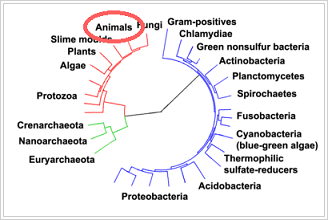Classification
Scientific Name: Patera pennsylvanica
Meaning of Patera: Latin for "saucer" (Wikipedia 2012)
Meaning of pennsylvanica: Latin for "of Pennsylvania" (Rook 2006)
Common Name: proud globelet
(Encyclopedia of Life 2012)
The origin of the common name is unknown
Classification: (Encyclopedia of Life 2012)
Kingdom: Animalia
Phylum: Mollusca
Class: Gastropoda
Order: Stylommatophora
Family: Polygyridae
Genus: Patera
Species: Patera pennsylvanica
Characteristics of Each Taxonomic Level:
Kingdom Animalia:
Patera pennsylvanica
are a part of the kingdom Animalia. There are several
characteristics that define the kingdom Animalia that include their
eukaryotic cells, multicellularity, and heterotrophic feeding styles
(ZipcodeZoo 2012).
On top of these things, the majority of animals are motile and have
a fixed body plan at some point in their life (ZipcodeZoo
2012).
All of these characteristics of the kingdom Animalia are relevant
for the species Patera pennsylvanica.
Phylum Mollusca:
The estimated 100,000 species within the phylum Mollusca contain a significant amount of diversity (About 2012). With some exceptions, the majority of molluscs have a similar body plan that includes a foot, a visceral mass, and a mantle (About 2012). The foot is involved in locomotion, the visceral mass houses the internal organs, and mantle surrounds the visceral mass. (About 2012). Also, molluscs are bilaterally symmetrical and are invertebrates (ZipcodeZoo 2012). All of these characteristics hold true for the species Patera pennsylvanica (ZipcodeZoo 2012).
Class Gastropoda:
Most of the class Gastropoda is made up of snails and slugs; snails
have an external shell while slugs do not (ZipcodeZoo
2012).
Gastropods undergo torsion, resulting in a 180° rotation of the
visceral mass (ZipcodeZoo 2012). 
Order Stylommatophora:
Land snails and slugs that breathe air make up
the order Stylommatophora (ZipcodeZoo 2012). In addition to this, all species within
this order contain two pairs of tentacles that have eyes on the ends
of them and directly below a membrane have
a pedal gland (ZipcodeZoo 2012).
Family Polygyridae:
These air-breathing
land snails lack the love dart (ZipcodeZoo 2012).
Furthermore, species within the family Polygridae have a single band
of muscle that functions in retracting the eyes and pharynx (ZipcodeZoo
2012). This
family lacks a
stimulatory organ and has ribbed jaws (ZipcodeZoo
2012).
Genus Patera:
As the latin translation of
Patera indicates, the snails in this
genus have a shell that is characterized by its shape that resembles
a saucer (Wikipedia
2012).
There are two other characteristics that identify snails within the
genus Patera that include having a
single tooth and an imperforate umbilicus (Wikipedia
2012).
Species Patera pennsylvanica:
Patera pennsylvanica are uniquely identified by their shell (Pilsbry
1940). The characteristics that separate Patera pennyslvanica
include its shell’s strength, its yellowish olive color, and its
half smooth exterior that becomes striated for the last half (Pilsbry
1940). Although the genus Patera is known for flattened
shells, the species Patera pennsylvanica have spires that are
heightened (Pilsbry 1940).
Next, learn about the habitat for Patera pennsylvanica. Or return to the home page.
